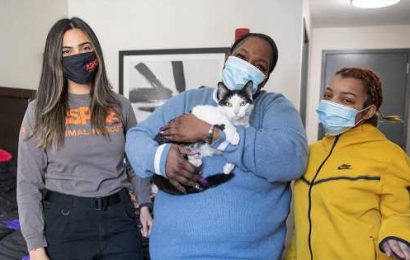
New formulation sunscreens could offer better protect against skin cancer by filtering out more harmful ultra-violet rays.
While most Europeans enjoy a holiday in the sun, high energy ultraviolet (UV) light from sunshine damages the DNA in our skin. The best-known adverse effect of excessive UV exposure is erythema (sunburn), but excessive UV is also the main culprit in some skin cancers.
As UV damage builds up, the skin cells stop functioning properly. At 4% of total cancers, skin melanoma is one of the top 15 most common types of cancer in Europe. It’s particularly prevalent in middle-aged and older people, especially in the 45–69 age group.
Now, Horizon-backed researchers are peering closer, looking into the molecular changes that take place when sunlight hits our skin.
They are also researching what—if any—effects it has on the rest of our bodies. This may lead to better ways to avert the harmful effects of UV exposure.
Ticking clock
Following exposure to UV light, a clock starts ticking on our skin, according to Prof Carmit Levy, a genetics biochemist at the University of Tel Aviv in Israel.
Levy wanted to understand what happens to the skin’s protection system and how long it takes to repair any damage through the UVdynamicsProtection project.
She discovered this skin’s internal clock while investigating what happens beneath the surface when we come into contact with UV rays. In tests, she and her team exposed two groups of lab mice to low levels of UV light in 24- and 48-hour intervals.
Upon exposure to sunlight, two things happen to the skin almost immediately. It produces the pigment melanin to protect the skin cells from further damage by blocking UV radiation, making the skin darker. The skin cells also set about repairing DNA damage.
Skin begins a 48-hour process of recovery as soon as it is exposed. If that process is disrupted by more exposure, the pigment-protection system does not work as well. The skin focuses on the more urgent task of DNA repair, rather than producing protective pigment. This leaves it further exposed to harmful rays. In cases where the skin cannot keep up with the demands for DNA repair, it can lead to cancerous growths.
“What we found amazing was that when you expose the skin every day, you get less pigment,” she said. “The system requires two days to get over the stress.”
“We noticed that internal systems were also being changed,” said Prof Levy. The fat and the lymph nodes of exposed mice were also different. The lymphatic system is part of the circulatory system which helps maintain health and fight infection.
Appetite stimulation
UV exposure also triggered an appetite-stimulating hormone in male mice, known as ghrelin, making them eat more. They undertook a trawl through dietary data to see if the same was true in humans.
The team explored the diets of about 3,000 people throughout a year in a paper published in journal Nature Metabolism. They found that men’s appetites were at the whim of solar radiation, eating significantly more in the summer compared to women.
In mice, UV radiation also had a pronounced impact on sexual behavior. “The males strongly prefer to be next to a UV-exposed female,” she said. And both male and female mice were more sexually active and responsive compared to those that did not get a dose of UV radiation.
Levy suspects that UV exposure may play a role in a number of other bodily systems too, and plans to explore the immune system response next. “UV is also modifying the immune system, and the immune system is so relevant to cancer, to autoimmune disease, to everything,” she said.
Better sunscreen
Meanwhile, other research teams are looking to prevent harmful UV radiation from reaching people’s skin in the first place, using improved sunscreen.
The molecules in sunscreen absorb the energy from the different types of UV radiation, namely UVA and UVB. Because the sunscreen absorbs the energy, the harmful radiation does not penetrate the skin and cause damage.
While there are many molecules that absorb UVB, UVA radiation has a longer wavelength which means it penetrates deeper into the human skin. It forms free radicals which interact with skin tissue to form wrinkles as well as melanomas. It can even pass through the windshield of a car, unlike UVB. So far, the effects of UVA are not as well understood as those of UVB.
“UVA is more difficult,” said Dr. Natercia Rodrigues, a former Marie Skłodowska-Curie Actions (MSCA) fellow at the University of Warwick. Rodrigues worked on the Horizon-backed SUNNRL project to develop a safe, effective and long-lasting sunscreen, especially to protect skin against UVA.
Rodrigues, a specialist in light absorption who had studied the molecule, wanted to see if its UVA absorption capabilities were still active when the molecule was included in lotions and complex commercial formulations.
In the search for alternatives, Rodrigues identified the aromatic methyl anthranilate as a possible sunscreen ingredient. This organic compound occurs naturally in grapes, jasmine, oranges and other plants. It’s used in food flavorings and the perfume and cosmetics industry because of its pleasant aroma.
Current-generation sunscreens on the market come with drawbacks. Avobenzone, for example, the most common sunscreen molecule on the market, quickly degrades once it has absorbed UVA, making it less effective at preventing skin damage.
This quick breakdown means typical sunscreen does not offer long-lasting protection. Over time, the chemicals it decays into can also interact negatively with other molecules in the environment and threaten biodiversity.
Marine life
Common chemicals found in sunscreen have been found to damage marine life such as coral reefs and even dolphins.
Unfortunately, methyl anthranilate did not turn out to be as effective as commercially available alternatives, but while studying it, they stumbled upon an interesting finding.
They discovered that lab-based spectroscopy studies, which analyze how molecules absorb and reflect light, could potentially reveal novel ingredients for sunscreen.
In the past, Rodrigues recalls, when she used spectroscopy to study molecules’ absorption qualities, she was met with skepticism. “One of the things I heard a lot was ‘Why would you do that? No one’s ever going to use a sunscreen like that.'”
“But it turns out that pretty much everything we see in simple solutions (of liquids) you also see in complex mixtures. That’s a huge step,” she said.
Currently, there are many stages involved in making a new cosmetic product, with numerous expensive studies along the way. Spectrographic analysis of how light interacts with the potentially sun-blocking molecules could save a lot of time.
“Instead of doing trial and error all the way to in vivo studies (in living organisms), you could use fundamental spectroscopy a bit earlier in the process,” Rodrigues said. “You can say, ‘With this sort of energy transfer mechanism, I think that this (molecule) is not going to be a good sunscreen. Let’s kill it now before we spend money.'”
Sunscreen: Slop on, but don’t stop
The search for the perfect sunscreen continues as Horizon researchers and others seek better solutions to the sunblock challenge. But one simple change can lead immediately to better UV protection.
Juan Cebrian is a senior scientist at Lubrizol Life Science which was involved in the SUNNRL project. Cebrian suggests a simple way to avoid getting burned.
The major mistake people make when it came to sunscreen is that they don’t apply it often enough, he says.
“They apply less product than necessary to protect themselves. And they also forget to apply it several times,” says Cebrian. Most people don’t slop on sunscreen often enough.
Source: Read Full Article


